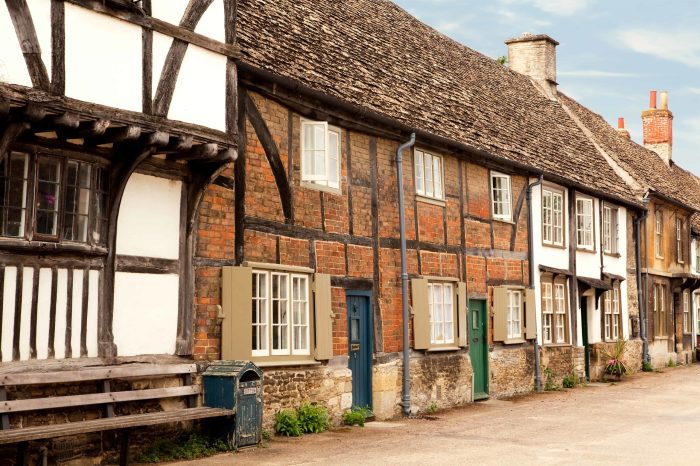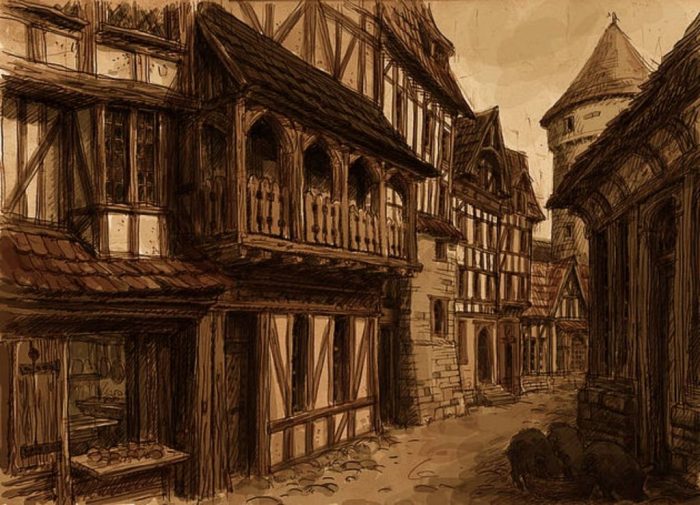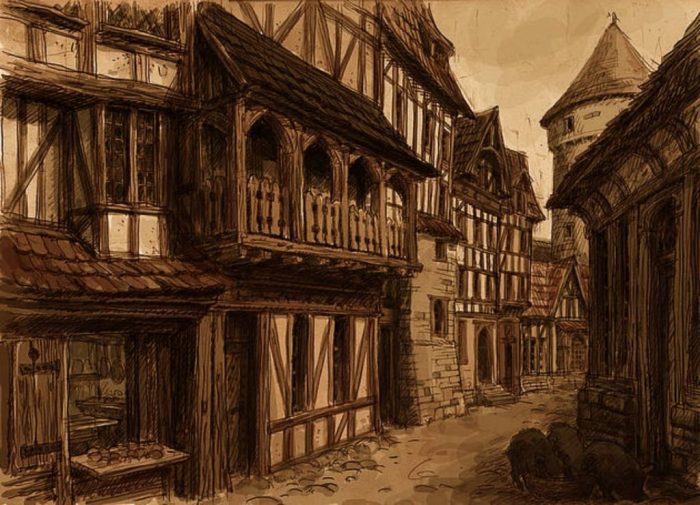Medieval towns in england to visit – Embark on an extraordinary voyage through time as we explore the captivating medieval towns of England. These living relics of a bygone era offer a tantalizing glimpse into the architectural marvels, historical significance, and vibrant culture that shaped the nation’s rich tapestry.
From the towering castles and grand cathedrals to the quaint cobblestone streets and traditional festivals, these towns invite visitors to immerse themselves in a world where history comes alive.
Historical Significance
The medieval towns of England hold immense historical significance, tracing their origins to the Norman Conquest of 1066. These towns played pivotal roles in shaping the nation’s political, economic, and social fabric.
The establishment of towns was a deliberate strategy by the Normans to control the conquered territories. They fortified existing settlements and established new ones, granting charters that conferred privileges and freedoms to their inhabitants. These towns became centers of trade, administration, and religious authority, fostering economic growth and urbanization.
Key Historical Events and Figures
Throughout the Middle Ages, these towns witnessed key historical events and were associated with prominent figures.
- The Magna Carta(1215): Signed in Runnymede, this charter established the principle of the rule of law and limited the power of the monarchy.
- The Black Death(1348-1349): Devastated towns and villages, causing a significant decline in population and economic activity.
- The Wars of the Roses(1455-1485): Fought between the House of Lancaster and the House of York, these wars led to political instability and the rise of the Tudor dynasty.
- William Shakespeare(1564-1616): Born in Stratford-upon-Avon, Shakespeare’s plays and sonnets are considered among the greatest works of English literature.
Architectural Heritage
Medieval towns in England boast a rich architectural heritage, showcasing a blend of architectural styles that reflect the town’s history and significance.
These towns are characterized by their well-preserved castles, cathedrals, churches, and other medieval structures that offer a glimpse into the architectural achievements of the period.
Castles
- Dover Castle:A formidable fortress built in the 11th century, Dover Castle played a crucial role in England’s defense against invasions.
- Windsor Castle:One of the oldest and largest inhabited castles in the world, Windsor Castle has been a royal residence for over 900 years.
- Warwick Castle:A grand medieval castle with a long and turbulent history, Warwick Castle is known for its imposing towers and fortifications.
Cathedrals
- Canterbury Cathedral:The seat of the Archbishop of Canterbury, Canterbury Cathedral is a UNESCO World Heritage Site and one of the most important pilgrimage sites in Christianity.
- York Minster:The largest cathedral in Northern Europe, York Minster is renowned for its magnificent stained glass windows and intricate carvings.
- Durham Cathedral:A Norman masterpiece, Durham Cathedral is set on a hill overlooking the River Wear and is known for its striking Romanesque architecture.
Other Medieval Structures
- Stonehenge:A prehistoric monument built around 3000 BC, Stonehenge is one of the most iconic landmarks in England and a UNESCO World Heritage Site.
- Hadrian’s Wall:Built by the Romans in the 2nd century AD, Hadrian’s Wall marked the northern boundary of the Roman Empire and is now a UNESCO World Heritage Site.
- The Shambles, York:A narrow medieval street in York, The Shambles is lined with timber-framed buildings and is one of the best-preserved medieval streets in England.
Preservation and Tourism
Preserving the medieval character of these towns has been a significant focus. Restoration projects have aimed to maintain the original architectural features, such as half-timbered buildings, cobblestone streets, and historic churches. Local authorities have implemented strict planning regulations to prevent inappropriate development that could compromise the historical integrity of these towns.
Tourism plays a crucial role in promoting the historical significance of these towns. Visitors from around the world come to experience the charm and authenticity of these medieval environments. Tourism revenue provides funds for preservation efforts, ensuring the continued upkeep and restoration of these historic assets.
Local Initiatives
- Community-led restoration projects involving local residents and volunteers.
- Educational programs and guided tours that highlight the historical importance of the towns.
- Collaboration between local authorities, heritage organizations, and businesses to promote responsible tourism.
Government Support
- Designation of historic conservation areas to protect the architectural integrity of the towns.
- Financial assistance for restoration projects through grants and tax incentives.
- Establishment of heritage trails and visitor centers to enhance the tourism experience.
Tourism Benefits
- Increased revenue for local businesses, including hotels, restaurants, and shops.
- Job creation in the tourism sector, providing employment opportunities for local residents.
- Promotion of local crafts and traditions, showcasing the cultural heritage of the towns.
Must-See Attractions
Medieval towns in England offer a captivating glimpse into the past, boasting a rich tapestry of historical sites, museums, and local landmarks that transport visitors back in time. From ancient castles to quaint cottages, these attractions provide an immersive experience, allowing visitors to explore the lives and traditions of medieval England.
Each town features its own unique collection of must-see attractions, offering a diverse range of experiences for visitors. The following table highlights some of the top attractions in each town, providing brief descriptions and historical significance:
York
| Attraction | Description | Significance |
|---|---|---|
| York Minster | A magnificent Gothic cathedral, renowned for its exquisite stained glass windows and towering central tower. | One of the largest and most impressive medieval cathedrals in England, a testament to the architectural prowess of the Middle Ages. |
| York Castle Museum | A sprawling museum housed within the walls of a former castle, showcasing the city’s rich history from Roman origins to the present day. | Provides a comprehensive overview of York’s past, with interactive exhibits and fascinating artifacts. |
| Clifford’s Tower | A 13th-century castle keep, offering panoramic views of the city and surrounding countryside. | A symbol of York’s medieval defenses, it played a significant role in the city’s turbulent history. |
| York City Walls | A nearly complete circuit of medieval city walls, allowing visitors to walk along the ramparts and explore the city’s fortifications. | A testament to the city’s medieval importance, providing a unique perspective on York’s past. |
Cultural Experiences

Medieval towns in England offer an immersive journey into the past, not only through their preserved architecture and historical significance but also through a range of medieval-themed events, festivals, and activities. These experiences provide a unique opportunity to engage with the traditions, crafts, cuisine, and performances of the Middle Ages.
Medieval Festivals and Events
Throughout the year, these towns host a variety of medieval festivals and events that recreate the atmosphere and customs of the era. These events typically feature jousting tournaments, archery demonstrations, and traditional music and dance performances. Visitors can also browse stalls selling medieval crafts, food, and souvenirs, providing a glimpse into the daily life and commerce of the period.
Exploring the medieval towns of England is a journey through history, offering a glimpse into the lives of our ancestors. From the cobblestone streets of York to the ancient walls of Chester, these towns provide a unique opportunity to experience the past.
Along the way, indulge in the sweet delights of the UK, such as the iconic popular sweets in the uk . These sugary treats, like the beloved Cadbury Dairy Milk chocolate and the tangy Sherbet Lemons, will add a touch of nostalgia to your medieval adventure.
Traditional Crafts and Demonstrations
Many medieval towns have workshops and studios where visitors can observe and learn about traditional crafts. These include blacksmithing, woodworking, pottery, and leatherworking. Skilled artisans demonstrate their techniques and share their knowledge, allowing visitors to appreciate the artistry and ingenuity of medieval craftsmen.
Medieval Cuisine and Dining Experiences
Medieval towns offer a chance to sample authentic medieval cuisine in charming restaurants and taverns. These establishments serve traditional dishes such as roasted meats, stews, and hearty bread, all prepared using historical recipes. Visitors can also indulge in medieval-style banquets, complete with period costumes and entertainment, providing a truly immersive dining experience.
Transportation and Accessibility: Medieval Towns In England To Visit
Medieval towns in England are easily accessible by public transportation, car, or other means. Many towns have train stations with regular service to major cities. Additionally, there are numerous bus routes that connect medieval towns to other parts of the country.
For those driving, there are ample parking options available in most towns. Many towns also offer designated parking spaces for visitors with disabilities.
Public Transportation
Taking the train is a convenient way to reach many medieval towns in England. There are direct train lines from London to York, Lincoln, Canterbury, and other popular destinations. Once you arrive at the train station, you can usually walk or take a short bus ride to the town center.
Driving
Driving is another option for getting to medieval towns in England. The road network is well-developed, and most towns are accessible by major highways. However, it is important to note that some towns have narrow streets and limited parking, so it is advisable to plan your route in advance.
Accessibility for Visitors with Disabilities
Most medieval towns in England are wheelchair accessible. There are ramps and elevators in many public buildings, and there are designated parking spaces for visitors with disabilities. However, it is important to note that some of the streets in these towns are cobblestone, which can be difficult to navigate for wheelchair users.
Accommodation and Dining
Immerse yourself in the medieval spirit by choosing accommodations and dining options that reflect the era’s ambiance and charm.
Indulge in traditional medieval dishes and experience unique dining atmospheres that transport you back in time.
Hotels and Inns
- The Feathers Hotel, Ludlow:A 17th-century coaching inn with oak-beamed ceilings and cozy fireplaces.
- The Old Bell Hotel, Malmesbury:A former monastery guest house dating back to the 13th century, offering a blend of medieval and modern amenities.
- Ye Olde Bell Hotel & Spa, Retford:A 16th-century coaching inn with a charming courtyard and historic features.
Guesthouses
- The Black Boy Inn, Abergavenny:A 16th-century timber-framed building with a traditional pub and comfortable guest rooms.
- The Olde Windmill, Burton Agnes:A converted 17th-century windmill offering unique accommodations and stunning views of the Yorkshire countryside.
Restaurants and Pubs
- The Eagle and Child, Oxford:A historic pub known for its literary connections, serving traditional British fare.
- The Old Mill, Stratford-upon-Avon:A 16th-century watermill converted into a restaurant, offering medieval-inspired dishes and a charming riverside setting.
- The Boars Head, Norwich:A 15th-century pub with a cozy atmosphere and a menu featuring traditional Norfolk cuisine.
Nearby Attractions
Medieval towns in England are often surrounded by other historical sites and attractions. These may include castles, abbeys, or other medieval villages.
Visiting these nearby attractions can help you get a better understanding of the history and culture of the region. They can also provide a fun and educational day trip.
Castles
- Windsor Castle(Windsor, Berkshire) is one of the largest and oldest castles in the world. It has been the home of the British royal family for over 900 years.
- Warwick Castle(Warwick, Warwickshire) is a 14th-century castle that has been restored to its former glory. It is now a popular tourist attraction with jousting tournaments, archery demonstrations, and other medieval activities.
- Dover Castle(Dover, Kent) is a 12th-century castle that overlooks the English Channel. It has been used as a military fortress for centuries and is now a popular tourist attraction.
Abbeys
- Westminster Abbey(London) is a 13th-century abbey that is the traditional coronation church of the British monarchy. It is also the burial place of many famous British kings and queens.
- Canterbury Cathedral(Canterbury, Kent) is a 12th-century cathedral that is the seat of the Archbishop of Canterbury. It is one of the most important pilgrimage sites in the Christian world.
- York Minster(York, Yorkshire) is a 14th-century cathedral that is one of the largest and most impressive in England. It is known for its beautiful stained glass windows.
Other Medieval Villages, Medieval towns in england to visit
- Lavenham(Suffolk) is a 15th-century village that has been preserved as a living museum. It is home to many beautiful medieval buildings, including the Guildhall and the Church of St. Peter and St. Paul.
- Castle Combe(Wiltshire) is a 14th-century village that is considered one of the most picturesque in England. It is home to many thatched cottages and a 15th-century market cross.
- Bibury(Gloucestershire) is a 16th-century village that is known for its beautiful Cotswold stone cottages. It is also home to the Arlington Row, a row of cottages that is often featured in postcards and travel brochures.
Suggested Itineraries
To optimize your medieval town exploration, consider these sample itineraries tailored to different trip durations.
For a comprehensive experience, allocate at least two full days to explore the town’s historical landmarks, architectural wonders, and cultural offerings.
1-Day Itinerary
- Morning: Explore the town’s castle or fortified walls, immersing yourself in its defensive history.
- Afternoon: Visit the town’s cathedral or abbey, marveling at its intricate architecture and religious significance.
- Evening: Stroll through the charming streets, soaking up the medieval ambiance and dining at a traditional pub.
2-Day Itinerary
- Day 1: Follow the 1-day itinerary.
- Day 2: Discover the town’s merchant guilds or trade halls, learning about its economic and social past.
- Visit a local museum to delve deeper into the town’s history and culture.
- Attend a medieval-themed event or performance for an immersive experience.
3-Day Itinerary
- Days 1-2: Follow the 2-day itinerary.
- Day 3: Explore the town’s surroundings, visiting nearby villages or historical sites.
- Consider taking a guided tour to gain insights from local experts.
- Indulge in a medieval-style banquet or feast, savoring the flavors of the past.
Ending Remarks

Our journey through the medieval towns of England has unveiled the enduring legacy of a remarkable era. These towns stand as testaments to the ingenuity, artistry, and resilience of our ancestors, offering a profound connection to the past and inspiring us to appreciate the enduring power of history.
Questions and Answers
What are the most popular medieval towns in England?
Some of the most popular medieval towns in England include York, Chester, Canterbury, Durham, and Warwick.
What architectural styles can be found in medieval towns in England?
Medieval towns in England showcase a diverse range of architectural styles, including Norman, Gothic, Tudor, and Jacobean.
What are some of the must-see attractions in medieval towns in England?
Must-see attractions in medieval towns in England include castles, cathedrals, city walls, and museums.



